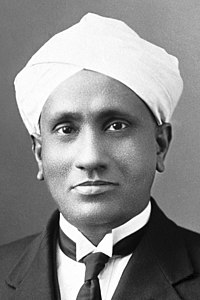
Photo from wikipedia
In recent years, transmission Raman spectroscopy (TRS) has emerged as a potent new tool for rapid, nondestructive quantitation in pharmaceutical manufacturing. In order to expand the applicability of TRS and… Click to show full abstract
In recent years, transmission Raman spectroscopy (TRS) has emerged as a potent new tool for rapid, nondestructive quantitation in pharmaceutical manufacturing. In order to expand the applicability of TRS and enhance its use in product quality monitoring during drug production, we aimed, in the present study, to apply partial least-squares (PLS) approaches to build a model consisting of 150 handmade tablets and covering 15 levels through the use of a multifactor orthogonal design of experiment (DOE), which was used to predict concentrations of validation tablets made by hand. The difference between results according to HPLC and TRS were negligible. The model was used to predict the active pharmaceutical ingredient (API) content in four random commercial paracetamol tablets, and corrected with the spectra of the commercial tablets to obtain four corresponding models. The results show that the content relative error in the model’s predictions after correction with commercially available tablets was significantly lower than that before correction. The corrected model was used to make predictions for 20 tablets from the brand Panadol. Compared with the HPLC results, the prediction relative error was basically less than 4.00%, and the relative standard deviation (RSD) of the content was 0.86%.
Journal Title: Molecules
Year Published: 2022
Link to full text (if available)
Share on Social Media: Sign Up to like & get
recommendations!